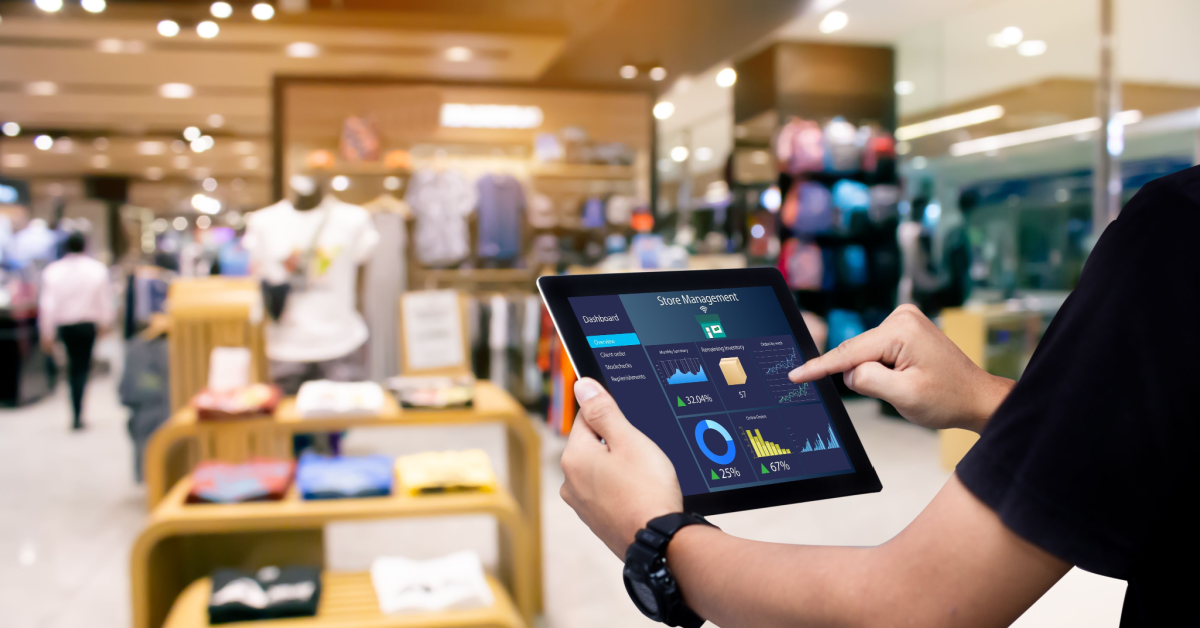
Shopping—as we once knew it—has changed forever. And with it, the art and science of providing the right product at the right place and time has become even more complicated for retailers everywhere.
In an ever-competitive retail landscape, customers—often impatient with chronic out-of-stocks and other supply chain disruptions—now expect shopping experiences that are more unified, personalized, and address their immediate needs. While some of these shifts in buying behavior began pre-pandemic, three years of constrained lifestyle greatly accelerated them, leaving redefined patterns that are here to stay. Retailers who may have initially considered these conditions a temporary phenomenon are now scrambling to keep pace.
The sudden but sustained increase in the adoption of omnichannel shopping, such as buying online and then picking up in-store (BOPIS) or curbside, plus same-day delivery options, has forced retailers to reimagine the tools they leverage to deliver superior service to every customer.
The inventory problem is hardly new. Retailers and consumer packaged goods (CPG) companies alike have been grappling with the challenges of having inventory imbalances, supply disruptions, empty shelves, and shrinkages forever. The methods to optimize and manage that inventory have also evolved over the past few decades and are very mature. On the face of it, solving a known problem with well-established tools should be an easy task. However, these outmoded tools are no match for today’s challenges. Where can we identify major differences?
- Right product vs. available product. The initial phase of the pandemic saw streamlining of assortments and product variants. Subsequently, there have been critical shortages due to the cascading impact of supply disruptions. This has forced retailers to make do with whichever products were available to sell. The concept of the ‘right product’ is severely challenged.
- Right place vs. any place. The changes in the shopping pattern and online purchases have brought volatility in the demand streams. While retailers can generally fulfill the online demand from stores, fulfilling an online order basket from multiple locations will still be the norm for a while. It will still take some time before a pattern reemerges for stable product placement and storage.
- Right time vs. now. The demand patterns have changed significantly. In grocery retail, weekend shopping still exists, but there is a significant movement toward curbside pick-ups. A good percentage of customers who shop in stores check the inventories online before going into the stores. This means the ‘right time’ is now driven by whenever the customer demands.
As fundamentals have changed across so many product lines, historical baselines are all but “out the window”. In turn, how should retailers and manufacturers retool themselves to face these new challenges?
Unfortunately, there are no proven formulas or widespread “best practices” to draw from. However, we can recommend three approaches which could help companies be better prepared and adaptable to change:
Use inventory visibility for better decisions. Real-time visibility of inventory and its availability is critical. Knowing where in the distribution chain the products are will help order fulfillment systems make better decisions. However, store inventory is always difficult to ascertain. This is due to shrinkages, products in carts but not yet checked-out, and misplaced products on shelves.
- Employing artificial intelligence (AI) and machine learning (ML) algorithms can improve the accuracy of inventory, shrink, and spoilage.
- Use real-time store inventory scanning capabilities to update physical inventories and then feed the AI/ML algorithms to build learning models.
- Integrate real time inventory information into the omnichannel platforms to improve customer experience and trust. Synchronizing these systems will allow customers to confirm an item’s availability and improve their end-to-end shopping experience.
Learn from customer and supplier behavior to create a new baseline. Accuracy of the inventory planning process depends upon an accurate demand forecast. And a reliable demand forecast into a foreseeable future will heavily depend upon recent demand patterns, customer behaviors, stockouts, and other events. It is more important to know which events are presently driving sales, rather than the historical demand patterns, because at the level retailers replenish, previous demand data are either non-existent or highly unreliable.
- Use built-for-purpose deep learning-based forecasting technology. The time-series based models depend heavily on the time series history, which if not reliable, will generate an unreliable forecast.
- Data collection is a crucial step in building a new data baseline for your business. Use in-store and online merchandising data, basket data, and supply variability to inform the demand signals.
- Let algorithms do the heavy lifting for creating demand forecasts, replenishment, and allocation quantities. Leverage internal planning and merchandising teams to institutionalize the organizational memory by tagging the sales and inventory data which these algorithms can learn and derive actionable insights.
Make planning and execution systems responsive. Inventory planning systems are not real-time systems. They rely on lagged forecast and inventory positions. When you execute against a plan that is not built on the latest ground realities, it will result in improper inventory placement and costly expediting. Accurate demand or sales plans based on assortment planning are essential for medium-term inventory and capacity planning. Using them for replenishment can be risky.
- Evaluate product assortments frequently. Use demand signals to determine which products could be shifted to online purchase versus which ones should remain in an omni-commerce mode.
- Incorporate consumption sensing alongside a demand plan to calculate inventory policies. Consumption sensing forecasting is based upon near real time POS, online orders, and store data, representing the recent trends, augmenting the demand plan.
- Safety stocks or buffer stocks should be dynamic and respond to the demand profile.
- Leverage real time or near real time inventories to generate order quantities.
In the coming few years, technology will drive synergies. The hardware technologies used in WMS and in-store operations and the AI/ML-based business applications are merging. Early adopters will win this race over competitors.

